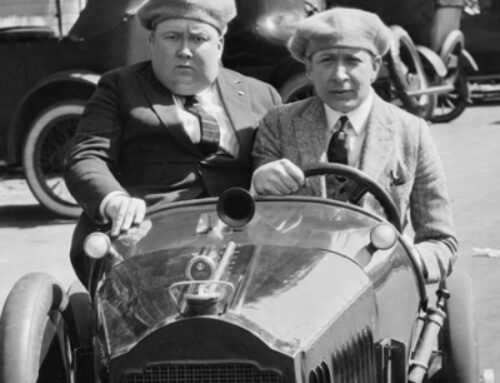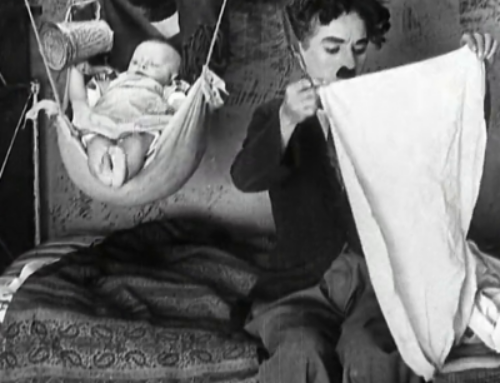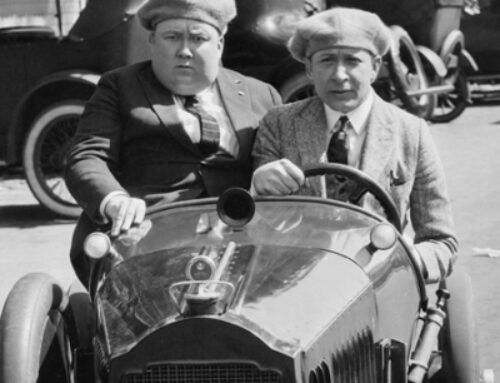Rural systems are of interest to those who govern the territory for a plurality of functions, which over time assume different weight and importance. In the Alpine regions, the importance of food production, which is fundamental for a subsistence economy, has been replaced by the importance of the rural system for its role in protecting, maintaining the soil and the equilibrium of the ecosystem and, subsequently, for its role in landscape production and maintenance, which is becoming increasingly important in mountain regional economies, increasingly linked to tourism. It is only recently that plans and programmes for the governance of the territory have assigned strategic axes of action and attention to the overall landscape and in particular to that connected to rural practices. In the case of the recent Trentino PUP, the structural role assigned to agriculture clearly emerges, precisely in order to connote landscape diversity, a fundamental attribute for a territory that positions itself on the tourism market as a ‘multitasking’ product, to be enjoyed with a plurality of attentions (to panoramas, to wine and food tasting, to varied itineraries, to permanent holidaying in traditional contexts). The diversity between agriculture on the valley floor, which draws new landscape structures connected to modernity and specialisation of farming methods, and mountain agriculture, which maintains traditional landscapes, may not weaken but rather enrich the overall sense of the Trentino landscape. The evolutionary aspects and the plurality of the landscape areas can improve the sense of identity and make it possible to deal better than other regions with the problems of soil consumption, infrastructural impacts and hydrogeological risk, precisely because of the attention and role now historically assigned to agro-forestry policies, making them prevail in many cases in the face of short-term interests and transformations with negative repercussions on the general layout.
1. The rules of hard work in traditional mountain farming
Rural practices impose a different consideration of time than that which has become dominant in our decision-making procedures, public and private, in recent years. The obsession with speed from mobility and communication has infected economic and administrative processes: no industrial company makes 5- or 10-year plans, 20-year mortgages take on the appearance of traps that frighten both banks and contractors, mayors make decisions only if they are certainly electorally expendable during their term of office. On the other hand, the historical memory of facts is lost in the space of a few months (who knows when and why the crisis began? Who remembers what was said and done about the crisis in the first two years?). The culture of the continuous present, without consideration for past events and without strength for medium- to long-term future strategies, is probably the most difficult effect of the ongoing socio-economic transformations.
On the contrary, the rural culture, at least to a large extent, continues to be based on slow, long-range strategies, on projects that take as their unit of time the life span of trees and the natural stability of primary markets, linked to food and house building. The fundamental long time span of the rural system allowed for powerful programmes adopted by entire generations, capable of structuring entire territories, as witnessed by the role that civic uses still play today (the best known example is the Magnifica comunità della Val di Fiemme). To emphasise the importance of this historical diversity of rural culture, two notes on the term ‘usi civici’:
– we speak of uses and not of goods, that is, there is an implicit recognition of work: the common good is not the ownership of the land, but the use that has been made of the land, which now produces because it has been cared for: because there is the work of generations that has made it useful. This aspect of a right based on a capacity for use and not on abstract ownership is to be kept as a compass to orient oneself in debates such as the one being waged today on water, in which use is speciously distinguished from good….
– call themselves civic, with an apparent contradiction, given that they are typically rural activities, the result of peasant labour. But it must be borne in mind that the etymon of civic does not refer to a part derived from the (recent) separation of town and country, but derives from civitas, civilisation: that pact that unites individuals not in ties of blood but in agreements of culture and common practices. The adjective civic connected to a use connotes a codified, regulated management of productive labour, the object of business decisions controlled by the community.
The rural world endowed itself with civitas through common uses, making pacts and defining rules of the same type as those that formed the basis of the formation of medieval cities, founded on the Commune, a noun adjective that we still use today, without realising it, to identify the only territorial institution that no one questions. The medieval city is founded on a pact of civic uses, which form the Commune. Of the civic uses that have so much of Italy’s historical identity, today those of the rural communities remain, like floating relics along an entirely new flow of values. They are still intact, untransformed, especially in the mountains, where the opportunity to organise together in the face of the adventure of agricultural production has been stronger and longer lasting: they are the management of pastures at high altitudes, of forests, of channelled waters deriving from glaciers (those that downstream are managed by consortia, autonomous bodies, detached from the communities).
Thus, civic uses are the ‘magnificent’ icon of mountain care that is implicit in rural practices, those that have in their DNA the sustainability of resource use, that take care of the balance between natural processes and their derivatives that are useful to the community (present and future) and in this care slow down or accelerate cycles, exploit microclimates, maintain conditions without ever distorting processes.
This attention is historically implemented not because the farmer is good or ecological, but because of a healthy principle of economy dictated by hard work, which is greatest in the mountains. When you have accomplished the feat of terracing, digging a canal to irrigate, and making a field fruitful on a semi-arid slope, you try to make that immense collective effort pay off for many years; when you build a shelter for livestock grazing at altitude, you do it in such a way that it is protected from avalanches and that it will be usable the next summer. Fatigue is an excellent counsellor of doing and maintaining (literally: preserving by manual action), it induces an implicit respect for the fruit of labour, one’s own and that of those who have gone before us, and thus for the basic criteria of the real economy, that is, (etymologically) of the laws that regulate life. Not only that, but fatigue has induced the pursuit, in traditional agriculture, of rules that adhere as closely as possible to the cyclical laws of nature, which, adopted and directed for productive purposes, allow exploitation with a minimum of labour, just as in judo one makes the adversary fall by accelerating his own momentum just a little.
From this ‘economical’ practice of traditional agriculture emerges a rule that we should never forget, in our choices of overall land management: the bulk of the effort must be concentrated on the planting, on the initial enterprise that requires extraordinary investments and exceptional skills, with a special effort dedicated, however, to minimising and making sustainable the costs of subsequent management. The drastic reduction in the rate of labour in rural works, which is a welcome result of modern technologies, however, reduces the implicit sense of sustainability and agreement with nature in farming; on the other hand, the growing dominance of progressive ideology, which pushes us to get more and more out of our activities, breaks the adherence to the cyclical time of the seasons, to the repetition of conditions, and thus demolishes the regulative use of memory. Agriculture becomes a technique divorced from the settlement rule on which the rural system is founded, which is instead made up of rootedness, of adherence to local conditions, of intergenerational agreements to secure the fruits of projects over very long periods of time, in which fathers work for their children’s children and mothers generate as much as possible to secure chances for the future of the family business and the community.
There no longer seems to be any point, in today’s rural work, in asking why our grandparents carried out a certain practice at a certain time, or why they refrained from building in certain places, or waited for the life cycles of plants and animals to be completed before exploiting them.
The result: costs (both monetary and environmental: of energy, water and chemical consumption, distribution and product preservation) are out of control; sustainability is no longer an implicit ingredient in the production process, but only an annoying criterion of compliance with administrative rules (this applies to the environment, but also to the economy, as income is now largely allocated to EU contributions). And all this in the face of an ideology of productivity, which now devours itself. In fact, the quantities produced are no longer correlated with income: the production of the food farm, which has increased tenfold since 50 years ago, no longer supports those who work on the farm, who need public support, which is now welfare.
2. Multifunctionality as a first step towards a new role for agriculture
The apparent paradox outlined above, whereby in times of crisis an entire production sector is supported by the public purse with no prospect of future autonomy, can only be explained by a territorial and long-term strategy, undeclared but deeply consistent with the new general framework of European governance: a role for agriculture is discovered and strengthened, not only and not so much for food production, but for other productions and services, starting with keeping the territory efficient.
However, the operational arm of the European agricultural strategy, the CAP, does not radically change the organisational structure of the directives, which continue to hinge solely on incentives for farms, with no involvement of public actors except in the organisational and control part. The novelty of this new strategy manifests itself timidly, with measures (some among many) aimed at encouraging the multifunctionality of farms and the willingness to invest in the environmental qualification of their production methods. The emphasis, in the RDP measures and in the publicity ‘launches’, is mainly on the economic aspects of multifunctionality: the prospects of income integration, the response to the demand of the new generations for work that is not only farming but extended to receptivity and the provision of services, the gradual adaptation to a demand for services no longer only linked to quantity but also to quality and sustainability. The incentives for the multifunctionality of farms are only a first sign, emerging in the magnum sea of CAP directives. The strategic objective of holding together the safety, usability, and identity of the territory at a time when urbanisation processes are unable to produce anything other than unsustainable footprints, catastrophic risks, and destruction of the landscape image, is still mixed and contradictory to the hitherto proclaimed objective of maximising and regional specialisation of food production. But the moment the priority of a line that promotes the more comprehensive and structural global functionality of agriculture is declared (as seems about to happen with the new 2013-2020 programme), the framework of values at stake must be completely reorganised.
Coordinated strategic actions must be achieved, in which the farm is incentivised not so much to produce more as to produce while improving the environmental and landscape conditions of the context. If the announced guidelines are confirmed, the new role of agriculture should be promoted in the initial phase, particularly in the types of territorial areas that are most affected by the crisis: in the hinterland of cities, to counter the incidence of the urban environmental ‘footprint’; in the mountains and in general in abandoned contexts, to counter the risk to hydrogeological safety and landscape degradation.
It is clear that the new guidelines will give rise to lines of action that cannot be strictly confined to agricultural policies strictu sensu, and that require a complex interaction between incentives for various productive sectors: environmental services and loisirs (particularly in the peri-urban sphere), tourism and cultural heritage (particularly for territories endowed with landscape resources but decentralised and poorly industrialised), and, in general, hydrogeological safety.
So necessarily, with these guidelines, the long period of isolationism of European agricultural policy, implemented in Italy in total separation from the environmental and landscape qualification and local development strategies, is coming to an end, unlike the implementation methods adopted by the French or the Germans. In Italy, this 30-year period has produced serious undesirable effects in the management machine: the sedimentation of procedures for the granting of incentives without verification of the effects, a loosening of the managerial and monitoring role in officials, a corporate culture devoid of experimentation and attention to innovation, and above all a separation, in the management of public affairs, of everything that concerns agriculture, financed and administered by offices that are practically independent from the more complex strategies of territorial government.
In short, it finally seems to be ending, for Italian agriculture, a season that is yielding results opposite to those, more remote but more exciting, of civic uses, at least as far as the common effort to manage the res publica is concerned. The next phase will be crucial to encourage the experimentation of procedures, practices and monitoring that put back at the centre the role and responsibility in land management that operators in agriculture, both public and private, can assume, for the qualification of relations with nature, the landscape, local development and tourism.
It will be important to help agricultural service officials to manage European funds through integrated projects between their own competences and others of territorial interest. This will be a long and complex but fundamental process, which can be activated if, alongside multifunctionality, cross-sectoral programming and the multi-tasking use of incentives for local development are promoted.
3. The potential of agriculture for land governance and local development
On the other hand, agriculture is structurally inherent to caring for the land, as long as it does not become the exclusive object of standardisation processes that make production activity alien to local specificities, as in a factory. In that dimension, if uncontrolled, agriculture can generate negative imprints on the territory that are even worse than those of industry, because they are widespread and more difficult to control in their impacts, in the homogenising chemicalisation of products and soil, in the consumption of primary resources, such as water or the fertile stratum. On the contrary, the role of agriculture is irreplaceable, which makes use of attention to the particularities of places, in which adaptation to environmental conditions is chosen and no longer imposed by the criterion of minimising fatigue. This is a basic process of landscape enhancement, which today finds support in the growing demand for micro-regional production, even niche products, in the appreciation of traditional landscapes and local identities. The recognition of local identities is facilitated by both the cultivation methods that give shape and recognisability to agricultural landscapes, (in themselves or in context with historical nuclei, cultural heritage and naturalistic emergencies) and food and wine production, characterising overall often neglected territorial passages and inserting them into the flourishing market of leisure, loisirs and taste. Therefore, agriculture has had and has a structural role in the local development of areas, hundreds of them in Italy, very articulated in terms of history and geography, where traditionally the diversity of the landscape has been the cross and delight of local identities, often so fragmented as to be on the margins of the growth processes of the last two centuries, but today an immense repository of resources and attractiveness for the new cultural tourism. Of course, these are slow processes to get going, in need of incentives in the start-up phase, when innovative operators are lacking and local areas have not yet achieved the visibility and notoriety that lead to significant flows of users. These socio-cultural dynamics take place in similar ways, to a large extent, both in the peri-urban hinterland of large cities and in the more peripheral areas of mountain provinces: in both cases there is a vast potential demand, and a base of natural, landscape and cultural resources that is neglected not only because of the trivialisation of urbanisation processes and the abandonment of marginal areas (even on the edges of cities), but also because of the standardisation of agriculture, the alienation of production to the users of places, and the oblivion of the traditional cultures of hospitality and integration that characterised the rural world until 50 years ago. For this gap to be bridged, and for the operational potential that they structurally have at their disposal, farms are today the only widespread subject that can contribute to a qualitative management of the territory in an economically sustainable manner (i.e. not at the total expense of the public purse, which will not have sufficient funds, at least in the next decade).
However, to seize the opportunities that may emerge for local development by exploiting the new potential demand, a generic willingness on the part of agricultural operators to commit themselves to the environmental and landscape qualification sectors as the new frontier of multifunctionality is not enough: what is needed is an inter-sectoral coordinating body that can calibrate the specific aspects, places, and methods where these energies and investments can be applied, so that they are effective for the enhancement processes, and enter into synergy with the other actions of territorial government (infrastructures, environmental protection, services for tourism and leisure, for example). Therefore, two complementary instruments and subjects are needed to launch the strategic axis of territorial qualification through agriculture:
– Incentives to good management practices, which can derive from a good application of the CAP and be entrusted to a large extent to farms that show the capacity to activate themselves for the landscape qualification objectives outlined above, and to endure in that perspective, to the point of shaking off the initial inertia of ‘sleeping’ territories;
– strategic plans and integrated programmes, taken on by territorial bodies animated by a framework of strategic objectives shared by the operators, with the capacity to manage the implementation of the plans over time, to monitor their effects, and to adapt to new needs or opportunities that are emerging. If an innovative application of the CAP in the next RDPs is conceivable, taking into account the new territorial role assigned to agriculture, we are in serious difficulty as far as territorial plans are concerned. Spatial planning in Italy suffers from a situation of paralysing contradiction: we have been concerned with regulating every transformative intervention but have never taken care of the effective management of ordinary use and degradation processes. Today, in a crisis that reduces interventions to the bone but increases improper use and degradation, we find ourselves consigned to a plethoric and ineffective regulatory disciplinary complex, like the seventeenth-century cries of Manzoni, and on the other hand to a very poor planning instrumentation, to incentivise and promote rational management, the only one capable of combating degradation: the rare cases of some efficiency are sectorial but lack coordination and are poorly integrated for application to the complexity of the territory.
The lack of instrumentation clearly emerges where and when the economic engines of development become packaged or enter a crisis, so that rules are no longer sufficient to curb spontaneous transformational pressure, as is the case with abandonment processes, or in cities in crisis, where incentives should be available to promote rationalisations and innovative experiments to indicate virtuous paths to local development and good management practices.
Only recently have some territorial plans (and the Trentino PUP among them) included some modalities for the implementation of addresses according to strategic axes and some attention to management processes, but always too timidly with respect to the two main nodes: sector programming and local urban plans. The node of sector programming is paradoxical: the more efficient a sector office is, the greater the autonomy it acquires over time, so much so that it has to defend, ‘against’ other services, the performance of ‘its own’, achieved through management balances and the allocation of funds in a ruthless competitive struggle within the same authority. This happens systematically in the largest and most complex administrations, and cascades down to the peripheries. Therefore, the real willingness (not lip service) of the most efficient services to act in synergy and collaboration in integrated territorial programmes, where the competencies of each should flow into overall strategies of the administration, is minimal.
On the other hand, theoretically the local plan is the place of planning dedicated to the interactions between the various sectoral competences, which, functionally divided at the scale of the vast area, must necessarily be integrated in sites where, due to proximity and interference, the various functions may be synergic or, on the contrary, conflicting. As we know, local plans do not respond to this role, but are only marginally concerned with functional coordination and local development, in fact only regulating building interventions and urbanisation processes of the built environment, almost completely neglecting open spaces, especially those intended for agriculture. The local plan ends up being one of many sector plans, dedicated only to urban planning procedures and not to the coordinated implementation of the territorial plan.
For the situations outlined above, it is precisely those who deal with planning in peri-urban or mountain areas who first recognise the urgency of including agricultural activities among the overall land management tools, given the importance of open areas and agricultural landscapes in those contexts. But this need clashes with a lack of available tools in Italy: only in very few regions or provinces have the plans for vast areas included some indication of the ‘vocations’ of the territory destined for agriculture, thus directing the application of RDP measures; only very few regional plans have identified an intermediate, inter-municipal dimension in which to operationally place the issues of local development, city-countryside balances, and the sustainability of the urban footprint in the environment and landscape.
Quite differently in other European countries. In France, for example, municipalities aggregated in programme agreements have drawn up Plan de Pays: strategic programmes oriented towards local development with particular regard to aspects of the agrarian landscape, which constitute a priority for State or Community funding provided they represent an agreed convergence point of the programming of the various sectors concerned with the territory: infrastructure, tourism, agriculture, environmental protection, urban construction, distribution of services, valorisation of cultural heritage, etc.
As far as operational management tools are concerned, in France, municipalities associated on a voluntary basis draw up Gerplans, shared management plans for undeveloped areas, complementary to urban plans, indicating the best locations and terms for landscape qualifications, mitigation of urban and industrial edge or infrastructure impacts, reclamation of exhausted or abused soils, and parts to be protected for the environmental network. In the Gerplans, disciplinary actions are much less than promotional ones, agreeing with operators and owners on the location of incentives, equalisation and integrated projects involving agricultural activities. In short, if the importance of agriculture for land management is understood, two processes of public administration reform must be activated, at the territorial scale and at the local scale, making it capable of integrated planning at the intermediate scale (e.g. that of the valley communities, used as a reference for the implementation of the PUP), where the role of agriculture is among the other management activities for the common good, placed at the centre of the plan, well beyond town planning and building regulations.
4. Agriculture for landscape diversity in the mountains: the case of the Trentino PUP
It is clear from the above that there is a need to reverse the objectives of programming in agriculture: from the promotion of standardised production to incentives for the sector’s contributions to landscape and production diversity. What is needed now is an experimental phase, completely innovative also from a technical and procedural point of view, to put into practice guidelines for diversified environmental and landscape qualification, with monitoring and controls to avoid waste and abuse and to measure the effectiveness of investments. This will be the task of the new RDP, but experimentation must also be reflected in territorial planning.
In Trentino, the opportunity of the valley community plans is absolutely timely in this perspective: the law and the PUP envisage that an aggregation of municipalities (geographically and landscape-wise well-matched) should provide itself with an integrated strategic plan, which dialogues with the various sectors of the provincial administration, putting on the table the specificities of its territory, environmental fragilities, landscape identities, and prospects for sustainable local development.
In the Community Plans, territorial and landscape diversity is structurally at the centre of attention, and this new horizon is fundamental to explore, starting with the PUP, in the capacity of the various operational sectors of the provincial administration to provide ‘dedicated’ indications and addresses. In particular, we can take advantage of a technical-administrative apparatus for the management of rural production (agriculture and forestry, obviously including livestock farming) that in Trentino, perhaps following in the wake of the tradition of civic uses, has shown particular attention to the major territorial issues that distinguish the various provincial areas. In particular, it will be useful to investigate locally the dynamics and relations (internal and external) of the two major rural systems recognised as characteristic: those of the mountains (forestry and livestock farming) and those of the specialised valley bottoms (fruit and vine growing).
The issue of rural mountain production is tackled by the Province of Trento with an integrated approach that should be taken as an example for the entire Alpine arc: environmental protection and forest productivity have always been part of a single management strategy that ensures the safety of the territory, water quality, but also productive capacity for building and energy production. Not only that, but the Forestry Sector also takes on the management issues of the pastures at high altitudes and thus plays an important role in the strategies of the livestock sector. The search for ecological-productive balances in the mountains is therefore at the centre of attention of a unified provincial office, and this has greatly facilitated the management of environmental and safety issues, and equally could facilitate the new perspective of landscape enhancement, promoted by the PUP but still to be built operationally.
It is clear that 40 years of coherent agro-forestry strategies included in the framework of the 1967 and 1987 SPPs have themselves contributed to determining a landscape that has maintained the characteristics of tradition and sustainability more than would have happened spontaneously, in the presence of individual interests or those of small groups, which had neglected the overall effect. But what can be asked of those who manage the rural mountain system today is a new frontier in the relationship with tourist facilities, the more advanced formation of a rural-tourist hybrid system, which assumes, without unnecessary modesty, the aspects of modernity and innovation, where appropriate, while maintaining the identity characteristics of the individual valleys and evolving the mountain landscape of each site with its own specificity, without yielding to prefabricated solutions in the construction and management of farms.
In this search for dynamic balances, the experience accumulating on the other front – that of specialised fruit and vine farming – can be valuable. In those contexts, innovation and research have dominated in recent decades, generating not only a high quality of products but a veritable new productive landscape, with its lights and shadows, which will also have to be seriously evaluated from an environmental, fruition and identity point of view and not only from a productivity point of view.
The management of agriculture on the valley floor certainly has the merit of having valorised rural production to the point of competing with urban uses, in fact participating in designing the new peri-urban landscape of the Adige valley floor, pressing for the borders of urbanised areas to be defined in a conclusive manner, and in some cases studying appropriate criteria for the landscape insertion of new types of productive buildings. It is precisely these experiments, which in some cases have reached the level of exemplary good practice, that demonstrate the potential of agriculture to participate as a protagonist in the implementation of territorial plans, especially for landscape aspects. But everything can remain unsuccessful in the absence of an inter-sectoral and shared procedure for evaluating the medium-long term objectives and the effects expected from each incentive or promotion of intervention, which brings together the requirements of landscape, tourist usability and environmental quality with those of production, business efficiency and economic sustainability of agricultural practices.




